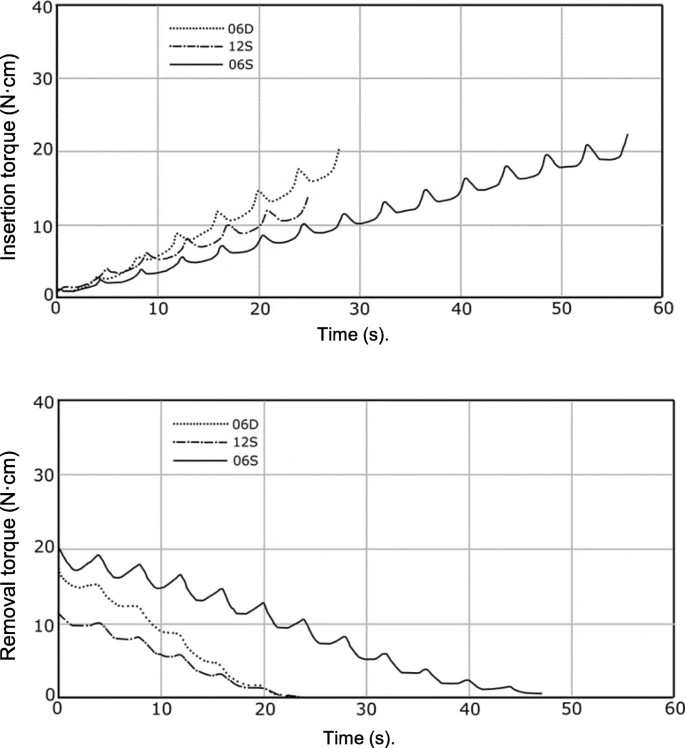Figure 4. Torque kinetics. Immediately after insertion terminated, the implant was removed using the same load and rotation speed. Torque kinetics were measured during implant insertion (top) and removal (bottom)
Figure 4. Torque kinetics
author: Yoko Yamaguchi,Makoto Shiota,Masaki Fujii,Masahiro ShimogishiMotohiro Munakata | publisher: drg. Andreas Tjandra, Sp. Perio, FISID

Serial posts:
- Effects of implant thread design on primary stability—a comparison between single- and double-threaded implants in an artificial bone model
- Effects of implant thread design on primary stability (1)
- Effects of implant thread design on primary stability (2)
- Methods : Effects of implant thread design on primary stability
- Results : Effects of implant thread design on primary stability
- Discussion : Effects of implant thread design on primary stability (1)
- Discussion : Effects of implant thread design on primary stability (2)
- Discussion : Effects of implant thread design on primary stability (3)
- Discussion : Effects of implant thread design on primary stability (4)
- Discussion : Effects of implant thread design on primary stability (5)
- Table 1 Dimensions of implants
- Table 2 Insertion torque (IT), removal torque (RT), and ISQ values
- Figure 1. Implant code 12S is similar to a commercially available standard
- Figure 2. Insertion torque (IT), removal torque (RT), and implant stability quotient (ISQ)
- Figure 4. Torque kinetics
- Figure 5. Microscopic analysis of contact interfaces.
- Figure 6. Bone debris at the contact interfaces.